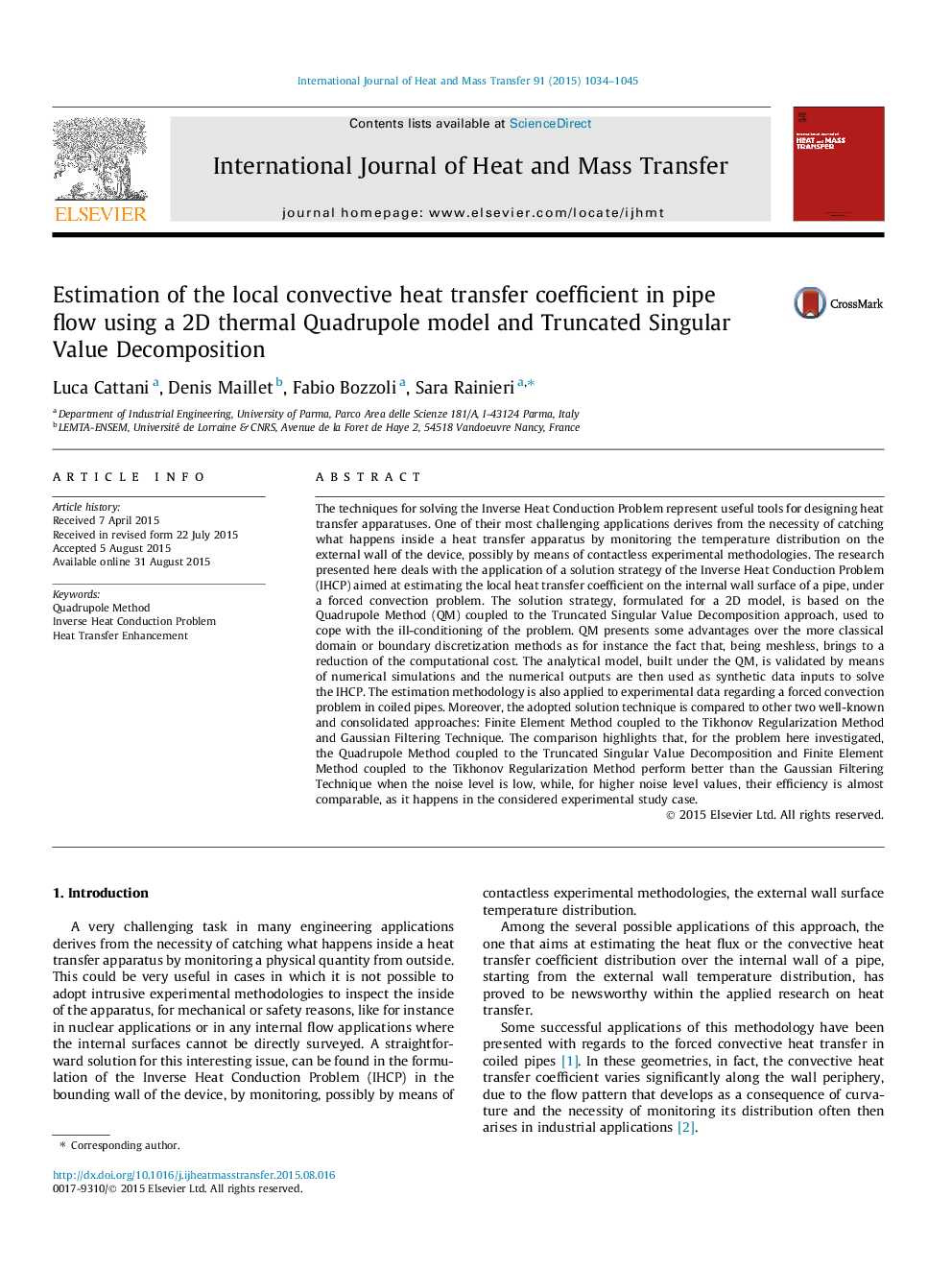| Article ID | Journal | Published Year | Pages | File Type |
|---|---|---|---|---|
| 7056497 | International Journal of Heat and Mass Transfer | 2015 | 12 Pages |
Abstract
The techniques for solving the Inverse Heat Conduction Problem represent useful tools for designing heat transfer apparatuses. One of their most challenging applications derives from the necessity of catching what happens inside a heat transfer apparatus by monitoring the temperature distribution on the external wall of the device, possibly by means of contactless experimental methodologies. The research presented here deals with the application of a solution strategy of the Inverse Heat Conduction Problem (IHCP) aimed at estimating the local heat transfer coefficient on the internal wall surface of a pipe, under a forced convection problem. The solution strategy, formulated for a 2D model, is based on the Quadrupole Method (QM) coupled to the Truncated Singular Value Decomposition approach, used to cope with the ill-conditioning of the problem. QM presents some advantages over the more classical domain or boundary discretization methods as for instance the fact that, being meshless, brings to a reduction of the computational cost. The analytical model, built under the QM, is validated by means of numerical simulations and the numerical outputs are then used as synthetic data inputs to solve the IHCP. The estimation methodology is also applied to experimental data regarding a forced convection problem in coiled pipes. Moreover, the adopted solution technique is compared to other two well-known and consolidated approaches: Finite Element Method coupled to the Tikhonov Regularization Method and Gaussian Filtering Technique. The comparison highlights that, for the problem here investigated, the Quadrupole Method coupled to the Truncated Singular Value Decomposition and Finite Element Method coupled to the Tikhonov Regularization Method perform better than the Gaussian Filtering Technique when the noise level is low, while, for higher noise level values, their efficiency is almost comparable, as it happens in the considered experimental study case.
Related Topics
Physical Sciences and Engineering
Chemical Engineering
Fluid Flow and Transfer Processes
Authors
Luca Cattani, Denis Maillet, Fabio Bozzoli, Sara Rainieri,
